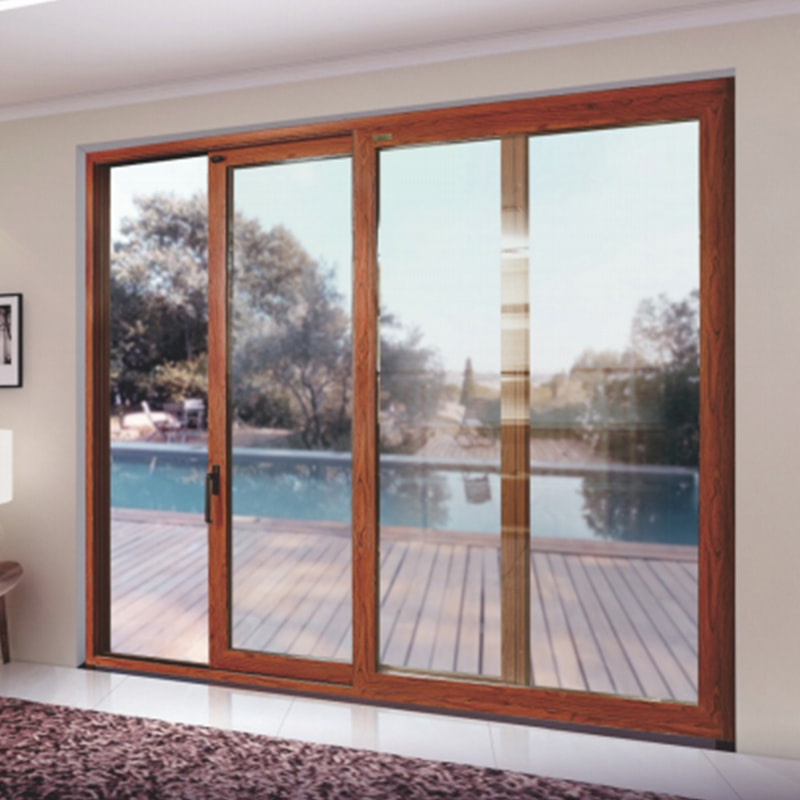Send inquiry
Every year, hurricane season brings strong winds, heavy rains, and storm surges to coastal areas, threatening people's lives and property safety. Traditional glass windows are easily broken by strong winds and flying debris, causing greater indoor damage and even endangering the safety of residents. Therefore, Hurricane Impact Windows have become an important choice for the protection of homes and buildings in coastal areas.
Hurricane Impact Windows use special reinforced glass and a sturdy frame structure to withstand impact and wind pressure in extreme weather conditions. This article will introduce the characteristics, working principles, main advantages, application scenarios, and future development trends of Hurricane Impact Windows in detail to help consumers better understand this key safety product.
The core function of Hurricane Impact Windows is impact and wind resistance. It uses special materials and manufacturing processes, and mainly includes the following parts:
Laminated Glass
Two or more layers of tempered glass (Tempered Glass) sandwich a strong PVB (polyvinyl butyral) or SGP (ionomer) interlayer.
Even if the outer glass breaks, the middle layer can still maintain structural integrity and prevent glass fragments from flying, thereby reducing the threat to people and property indoors.

Reinforced Frames
Made of aluminum alloy, steel or high-strength PVC materials, it enhances the overall stability of the window and ensures that it will not deform or break under strong wind pressure.
Weatherproof Sealing
Adopt high-quality sealing strips and waterproof design to effectively prevent rainwater from hurricanes from penetrating and keep the room dry.
Impact and Wind Resistance Testing
During the production process, hurricane protection windows need to undergo rigorous wind pressure and impact resistance tests to meet building safety standards such as ASTM E1886 and ASTM E1996 standards.
Excellent impact resistance
After testing, hurricane protection windows can withstand the impact of high-speed flying debris, such as wood blocks or other hard objects at speeds of more than 110 kilometers per hour, significantly reducing the risk of broken windows during hurricanes.
Enhanced building structural stability
When traditional windows are broken, the indoor air pressure will rise rapidly, increasing the risk of damage to the roof and walls. Hurricane windows can prevent this from happening, thus protecting the building structure.
Reduce noise pollution
The multi-layer structure of laminated glass not only resists impact, but also effectively isolates outside noise, providing a quieter living environment.
Improve energy efficiency and reduce energy costs
Many hurricane windows use Low-E (low-emissivity) coatings, which can reduce ultraviolet rays entering the room, while improving indoor insulation and reducing air conditioning and heating costs.
Improve home security
Due to the strong glass structure, hurricane windows can effectively prevent window break-ins and improve the safety of homes even in the face of burglary.
Insurance discounts
Many insurance companies encourage the installation of hurricane windows because it can reduce the damage caused by storms. Therefore, homeowners who install such windows may receive home insurance discounts and save costs in the long run.
1. Coastal homes and apartments
In hurricane-prone areas such as Florida, Texas, and Louisiana in the United States, many families install hurricane windows to reduce storm damage.
2. Commercial buildings and hotels
Buildings such as hotels, office buildings, and shopping malls require additional security protection to ensure the safety of property and personnel. 3. Hospitals and schools
These public facilities need to remain operational during severe weather, so using hurricane impact windows can provide an extra layer of safety.
4. Government and infrastructure buildings
Critical infrastructure such as police stations, fire stations, and shelters must remain operational during extreme weather conditions, so strong impact windows are essential.
Smart glass technology
Future hurricane impact windows may incorporate smart glass technology to automatically adjust light transmittance and enhance energy efficiency.
Lighter and stronger materials
Researchers are developing lighter but stronger materials, such as nano-enhanced glass or new polymer layers, to improve the impact resistance of windows.
Integration with smart home systems
Future impact windows may be equipped with smart sensors that automatically reinforce windows when hurricane warnings are detected, improving home automation security.
Greener manufacturing processes
Manufacturers are working on more sustainable manufacturing methods to reduce carbon emissions and improve the recyclability of glass, promoting the development of green buildings.
Hurricane impact windows are an important part of modern building security, especially for hurricane-prone areas. Its high-strength glass and sturdy frame structure can effectively resist strong wind impact, reduce storm damage, and provide additional sound insulation, energy saving and safety advantages.
With the advancement of material technology and smart home technology, hurricane protection windows will become more efficient, lightweight and intelligent in the future, providing residents and commercial users with a safer and more comfortable living environment. In today's frequent extreme weather, choosing to install hurricane protection windows is not only an investment in personal property, but also a guarantee of life safety.